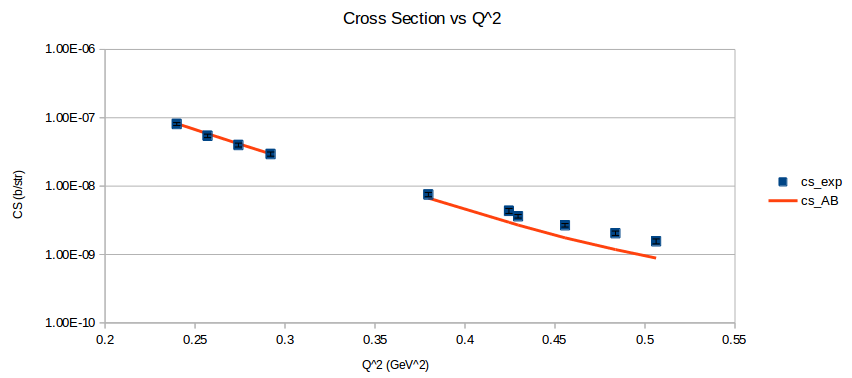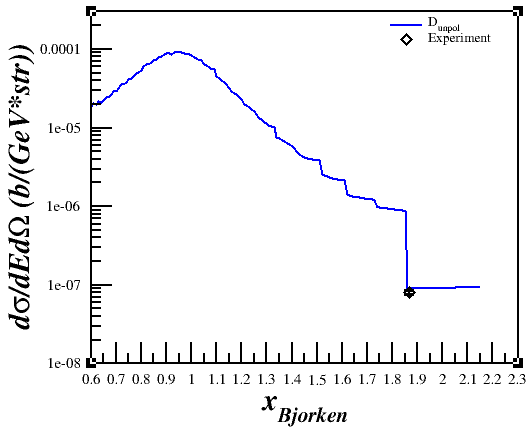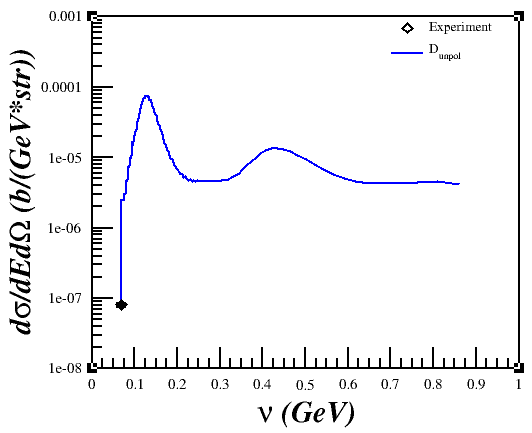Difference between revisions of "Elong-15-04-30"
(New page: =Background= As mentioned previously, I was able to calculate the elastic cross section using a parameterization of the deuteron's elastic form factors. With the A an...) |
|||
| Line 32: | Line 32: | ||
! <math>Q^2 = 0.18</math> (GeV<sup>2</sup>) !! <math>Q^2 = 0.31</math> (GeV<sup>2</sup>) !! <math>Q^2 = 0.71</math> (GeV<sup>2</sup>) !! <math>Q^2 = 1.50</math> (GeV<sup>2</sup>) !! <math>Q^2 = 1.80</math> (GeV<sup>2</sup>) | ! <math>Q^2 = 0.18</math> (GeV<sup>2</sup>) !! <math>Q^2 = 0.31</math> (GeV<sup>2</sup>) !! <math>Q^2 = 0.71</math> (GeV<sup>2</sup>) !! <math>Q^2 = 1.50</math> (GeV<sup>2</sup>) !! <math>Q^2 = 1.80</math> (GeV<sup>2</sup>) | ||
|- | |- | ||
| − | | [[Image:2015-04-30-sig-q2-018.png]] || [[Image:2015-04-30-sig-q2-031.png]] || [[Image:2015-04-30-sig-q2-071.png]] || [[Image:2015-04-30-sig-q2-0150.png]] || [[Image:2015-04-30-sig-q2-180.png]] | + | | [[Image:2015-04-30-sig-q2-018.png|300px]] || [[Image:2015-04-30-sig-q2-031.png|300px]] || [[Image:2015-04-30-sig-q2-071.png|300px]] || [[Image:2015-04-30-sig-q2-0150.png|300px]] || [[Image:2015-04-30-sig-q2-180.png|300px]] |
|- | |- | ||
|} | |} | ||
Revision as of 12:52, 30 April 2015
Background
As mentioned previously, I was able to calculate the elastic cross section using a parameterization of the deuteron's elastic form factors. With the A and B form factors, the cross section was estimated as
<math>\sigma = \sigma_{Mott} \left[ A + B \tan^2 \left( \frac{\theta}{2} \right) \right]</math>
I found a paper from Galster (1971) that included elastic cross sections (and not just A and B), which I was able to reproduce well. (Note: The dip around Q2=0.5 is because of the parameterization underestimating A.)
However, when I would plot it versus x or nu,
I wasn't getting what I was expecting in relation to the QE peak.
The Fix
Discussing the issue with Doug and Donal, I realized that the problem was that I was trying to compare a single-derivative elastic cross section with a double-derivative QE cross section, so what I was plotting was the area of the elastic peak and not the peak itself. This was fixed by using a delta function, estimated as <math>\delta(E'-E'_{el}) \approx \frac{n}{\sqrt{\pi}}e^{-n^2 (E'-E'_{el})^2}</math> with <math>n = 5000</math> and <math>E'_{el}=\frac{Q^2}{(2M_D)}</math>, to the cross section. Now, the cross section is calculated by
<math>\sigma = \sigma_{Bosted} + \sigma_{elastic}</math>
where
<math>\sigma_{elastic} = \sigma_{Mott} \left[ A + B \tan^2 \left( \frac{\theta}{2} \right) \right]\delta(E'-E'_{el})</math>
behaves as expected.
| <math>Q^2 = 0.18</math> (GeV2) | <math>Q^2 = 0.31</math> (GeV2) | <math>Q^2 = 0.71</math> (GeV2) | <math>Q^2 = 1.50</math> (GeV2) | <math>Q^2 = 1.80</math> (GeV2) |
|---|---|---|---|---|
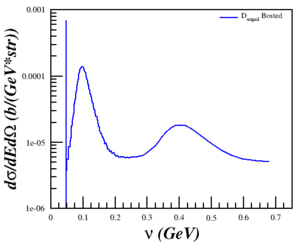 |
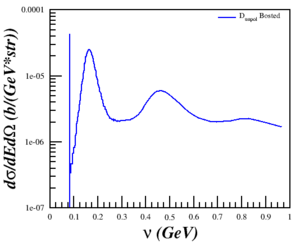 |
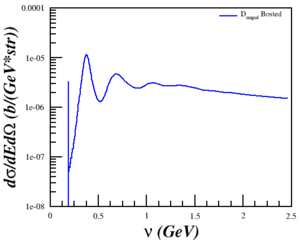 |
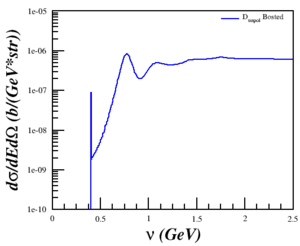 |
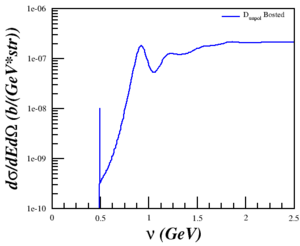
|
